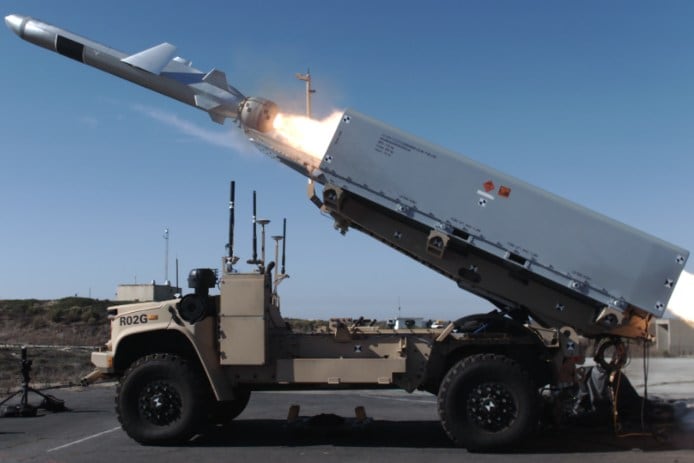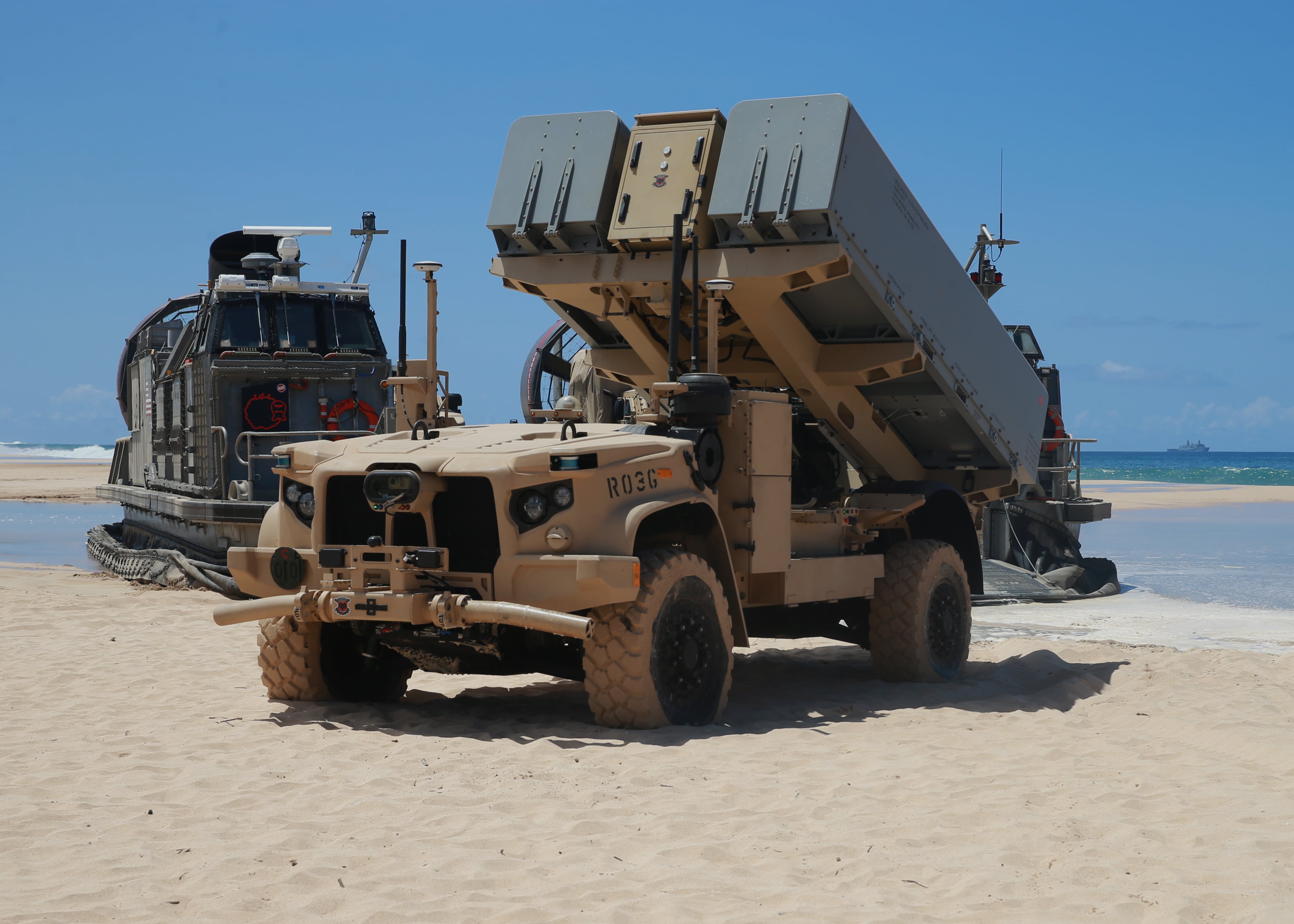Canon-cocking artillery Marines in California will kick off the first of two years of experimentation with the Corps’ ship-sinking missile in 2022.
The Marines of 11th Marine Regiment at Camp Pendleton received the Navy-Marine Expeditionary Ship Interdiction System, or NMESIS in late 2021.
That delivery followed a successful movement fire and return of the NSM by brothers-in-arms Marines of 1st Battalion, 12th Marine Regiment, in Hawaii in August.
RELATED

That fire saw Marines conduct the first-ever load/offload of the system onto a Marine-flown C-130 out of VMGR-352 and landing craft air cushion, or LCAC and target data transfers to complete the strike.
Two NSMs were fired, traveling more than 100 nautical miles to hit a decommissioned Navy ship off the Hawaiian coast, officials told Marine Corps Times.
And the route there followed an evasive route, basically not a straight line. That’s how these weapons must fly to make it to their target.
The 11th Regiment “Cannon Cockers” will help develop the tactics, techniques and procedures that future Marine artillery units will employ with the NSM, officials said.
Each component of the system is already in use, it’s the combination of various pieces that’s being worked out in testing and experimentation.
The NMESIS is a includes the Naval strike missile, a remotely operated ground unit for expeditionary vehicle, or ROGUE, which is a remote-control joint light tactical vehicle. The program commenced in late 2019 following Marine Corps Commandant Gen. David Berger’s push to get Marines into the ship-killing business to better enable the Navy to fight in contested areas of the Pacific and elsewhere.
This is an excerpt from “19 Things Marines Need To Know For 2022,” in the January print edition of Marine Corps Times.
Todd South has written about crime, courts, government and the military for multiple publications since 2004 and was named a 2014 Pulitzer finalist for a co-written project on witness intimidation. Todd is a Marine veteran of the Iraq War.




